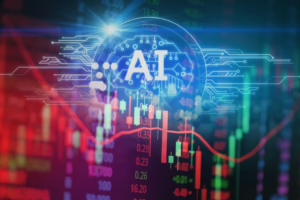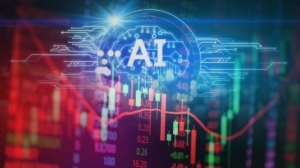What Does Artificial Intelligence Really Mean? A Deep Dive into Its Definition
Introduction
Artificial Intelligence (AI) has become a buzzword in the contemporary world, influencing myriad aspects of daily life—from digital assistants like Siri and Alexa to complex systems predicting weather patterns and diagnosing diseases. But what does AI really mean? To understand this, we need to explore its definitions, types, history, and implications.
Defining Artificial Intelligence
Artificial Intelligence can be broadly defined as the ability of machines to perform tasks that typically require human intelligence. This includes capabilities such as understanding natural language, recognizing patterns, solving problems, and making decisions. According to Stuart Russell and Peter Norvig, authors of “Artificial Intelligence: A Modern Approach,” AI can be classified into two primary categories: weak AI and strong AI.
Weak AI (Narrow AI)
Weak AI refers to systems designed to perform specific tasks. This includes algorithms used in spam filtering, image recognition, and recommendation systems. These machines do not possess self-awareness or true understanding; they can only simulate intelligent behavior based on programmed instructions and learned patterns from large datasets. For example, an AI algorithm that suggests movies on Netflix operates within defined parameters but does not have consciousness or understanding of the content being recommended.
Strong AI (General AI)
Strong AI, on the other hand, refers to machines that possess the ability to understand and reason about the world as a human would. This form of AI is still largely theoretical; it implies a level of cognitive capability and self-awareness that current technology has not achieved. A true example of strong AI would be a robot that can engage in meaningful conversations, learn from experiences, and possess feelings—an entity that mimics human thought processes on a comprehensive level.
Historical Context
The concept of artificial intelligence isn’t new. Early discussions about machine intelligence date back to classical philosophy and have evolved through the ages. The term “artificial intelligence” was officially coined in 1956 by John McCarthy during the Dartmouth Conference. Since then, AI has gone through several cycles of optimism and disillusionment, commonly referred to as “AI winters.”
Early Developments
In the 1960s, researchers succeeded in developing simple rule-based systems, which relied on hardcoding rules to govern their behavior. For instance, the General Problem Solver (GPS) was an early AI program that could solve a range of problems by employing heuristic methods. However, it struggled to scale, and its limitations led to decreased funding and interest in AI research.
The Resurgence in AI
The 21st century saw a resurgence in AI research, primarily due to advances in computational power, the availability of vast amounts of data, and improvements in algorithms. Machine Learning (ML), a subset of AI, has come to dominate much of this resurgence. ML systems learn from data without being explicitly programmed to perform specific tasks, redefining the scope and capabilities of AI.
Types of Artificial Intelligence
Understanding the various types of AI helps clarify its definitions and applications. These can be categorized into different levels of complexity:
Reactive Machines
Reactive machines are the most basic form of AI. They do not have the ability to form memories or use past experiences to inform future decisions. A classic example is IBM’s Deep Blue, which famously defeated chess champion Garry Kasparov in 1997. Deep Blue analyzed chess positions and outcomes but had no memory of past games or experience.
Limited Memory
Limited memory AI can retain some information from past experiences to improve future decisions. For instance, self-driving cars use limited memory to make real-time decisions based on their previous encounters with different driving conditions and obstacles.
Theory of Mind
This type of AI is still in the realm of theoretical exploration. It would require machines to understand human emotions, beliefs, and social interactions. Developing this level of AI presents substantial ethical and technical dilemmas, and it remains an area of active research.
Self-Aware AI
Self-aware AI, another theoretical progression, would necessitate machines having consciousness and self-awareness. As of now, this level of AI has not been realized and raises profound ethical questions regarding rights and responsibilities.
Techniques in AI Development
Machine Learning
Machine Learning is a core component of modern AI. It utilizes algorithms and statistical models to enable computers to perform specific tasks without manual programming. A crucial aspect of ML is the ability to learn from data. Supervised learning, unsupervised learning, and reinforcement learning are the three primary types of ML:
-
Supervised Learning: Involves training AI on labeled datasets where the correct output is known.
-
Unsupervised Learning: Involves finding hidden patterns in data without pre-existing labels. Clustering and association are popular techniques used in this method.
-
Reinforcement Learning: Involves agents learning to make decisions through trial and error, receiving feedback in the form of rewards or penalties.
Deep Learning
Deep Learning, a subset of machine learning, mimics the neural networks in the human brain. It uses layers of interconnected nodes to process data, allowing AI to excel in tasks like image and speech recognition. Powerful processing capabilities and access to large datasets have fueled the growth of deep learning, enabling breakthroughs in various fields, from healthcare to finance.
Real-World Applications of AI
The applications of AI are staggering and continue to grow. In healthcare, AI algorithms assist in diagnosing diseases, tailoring treatments, and even predicting patient outcomes. In the finance sector, AI is used for fraud detection and algorithmic trading. E-commerce platforms use AI for personalized shopping experiences and inventory management.
Natural Language Processing (NLP)
NLP is a prolific area of AI that focuses on the interaction between computers and humans through natural language. Chatbots, sentiment analysis, and language translation systems are examples of NLP applications that have transformed customer service and communication.
Robotics
Robotics is another dynamic field leveraging AI technology. Robots equipped with AI can execute complex tasks in manufacturing, logistics, and even space exploration. These autonomous systems enhance efficiency and reduce human error.
Ethical Considerations
As AI technology advances, so do ethical concerns. Issues related to bias, transparency, and accountability have emerged. For instance, biased AI algorithms can inadvertently perpetuate societal inequalities if trained on skewed data. Furthermore, transparency in AI decision-making processes is paramount, especially in critical sectors like healthcare and law enforcement.
Regulation and Governance
Given the rapid evolution of AI, regulatory frameworks are essential for addressing these ethical concerns. Entities like the European Union have proposed guidelines for the ethical use of AI, emphasizing human oversight, transparency, and justice. The challenge lies in finding a balance between fostering innovation and protecting human rights.
The Future of AI
As we look ahead, the potential for AI appears limitless. From augmenting human capabilities to solving complex global challenges, AI could redefine how society operates. However, significant technological, ethical, and regulatory hurdles remain.
The Role of Collaboration
The future will likely depend on interdisciplinary collaboration among technologists, ethicists, policymakers, and the general public. Engaging in open dialogues will be critical for navigating the complexities posed by AI technology.
Conclusion
Understanding what artificial intelligence truly means requires delving into its definitions, types, historical context, applications, and ethical frameworks. As AI technology continues to evolve, society must grapple with the implications it holds for the future. The development and integration of AI into our daily lives will require ongoing examination and commitment to ethical principles that prioritize humanity’s best interests. By doing so, we can harness the full potential of AI for a better tomorrow.
This article provides an overview of the multifaceted nature of AI. Should you require more in-depth exploration on specific topics, such as technical implementations or case studies, let me know!


























Add Comment